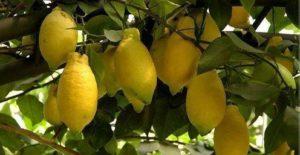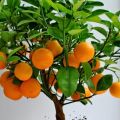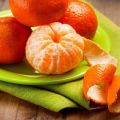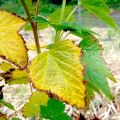Why mandarin leaves turn yellow, causes of the disease and what to do
There are many reasons why the leaves of the indoor tangerine turn yellow. It is difficult for a beginner to understand them. The appearance of the plant reflects errors in maintenance and care. Leaves can turn yellow and peel off due to illness or pest infestation.
Causes of plant diseases
There are several reasons why indoor tangerine sheds leaves, does not bloom, lags behind in development. They all relate to care and living conditions. The tree loses leaves if it does not have enough sunlight. The pot with the plant must be rearranged to a different, more illuminated place.
Sudden changes in air temperature negatively affect immunity. Citrus fruits love when a pleasant microclimate is created around them. Air humidity and temperature are constant, there are no drafts.
In some cases, the appearance of dry, yellow leaves on a tangerine indicates pests that have settled on the plant.
The appearance of citrus fruits suffers from the scale insect, spider mite. Insects oppress the mandarin, take away nutrients from it, and undermine the immune system.
The condition of the tree is affected by the fertility of the soil. It decreases over time. Mandarin can get sick, stop developing, if it is not transplanted into another container every year. The appearance is affected by the wrong irrigation regime, lack or excess of moisture. An analysis of these factors will help to find out the exact reason why the tangerine turns yellow.

Possible mandarin diseases by symptoms
Diseases that occur when growing tangerine can be caused by poor care, unbalanced diet. They are manifested by drying, curling of leaves, lack of fruits, their bad taste, drying of the ovaries.
Leaves fall
The plant has entered a dormant period if it sheds its leaves from October to February. There is no cause for concern. Until March, the mandarin must be moved to a cool room (15 ° C), reduce the volume and frequency of watering.
Reasons to be corrected:
- dry air;
- large pot;
- when planting, the root collar was deepened;
- the soil is poor, it lacks potassium;
- bad light;
- drafts;
- waterlogging of the soil.
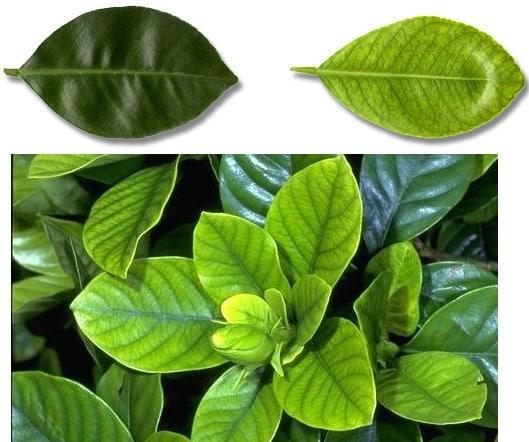
The air is humidified using household devices (air humidifiers), by spraying the crown with water. Planting flaws are corrected, providing the tree with an optimal microclimate.For good nutrition, tangerine is fed with potassium nitrate.
The lack of natural light is made up for with artificial lighting.
Mandarin does not bloom
You can stimulate the flowering of a grafted mandarin with simple measures. Arrange a "cold" winter for him at the end of winter. Create high-quality artificial lighting in the spring. This is enough for the formation of fruit buds.
Leaves turn yellow
Yellow spots that appear on the lower leaf plates indicate a lack of nitrogen. Yellowness will also cover the upper part of the crown, if the tangerine is not fed in time with urea or other nitrogen-containing fertilizer.

The pale yellow color of young leaves is a symptom of chlorosis. The reason is lack of iron. Eliminate the problem with iron chelate. They are fed tangerine once a month. Poor housing conditions (small pot, poor lighting) also cause yellowing.
Fruits fall
It is not always clear what to do when the mandarin fruit is crumbling. A common cause is a viral disease. The small ovary often falls off due to the scabbard. Fruits the size of a nut fall off if the conditions of detention are violated:
- dry air;
- bright sun;
- enhanced nitrogen feeding at the time of ovary formation;
- insufficient or excessive watering.
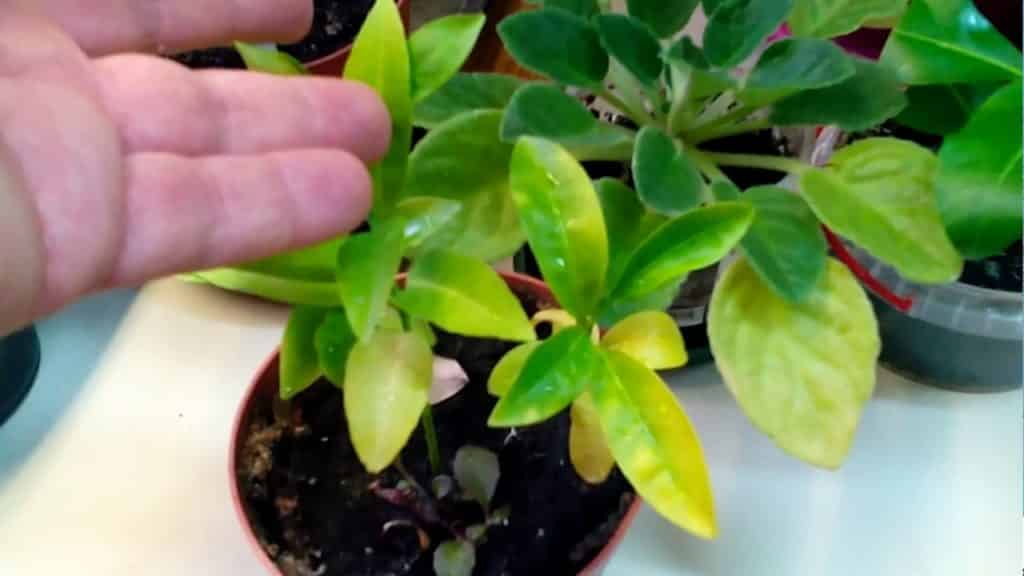
Leaves are drying
Mandarin dries up due to improper watering. A sign of waterlogging is a dry brown border on the leaf plates. The tree must be transplanted to save it from death. Cut off rotten roots. Pour drainage into the container. Prepare a breathable soil mixture. Most of it should be leafy land.
The dried plant is reanimated according to the following scheme:
- put in a basin of water;
- watered from above until the soil is completely moistened;
- excess liquid is removed (drained);
- the crown is sprayed with "Epin".
The stimulant treatment is repeated every 2 weeks.

Leaves curl
Aphids are becoming a common reason why indoor mandarin leaves curl. If there are no insects, then perhaps the soil in the pot is dry and the plant simply does not have enough moisture.
White bloom
By the white waxy bloom on the leaf sinuses, it can be assumed that mealybugs are on the mandarin. In case of severe infection, the surface of the leaf plates is covered with a sticky layer. Plant growth is inhibited, the leaves fall off.
Mandarin Diseases
Homemade tangerine is prone to viral and bacterial diseases. Illiterate care, proximity to diseased plants, insects leads to them.
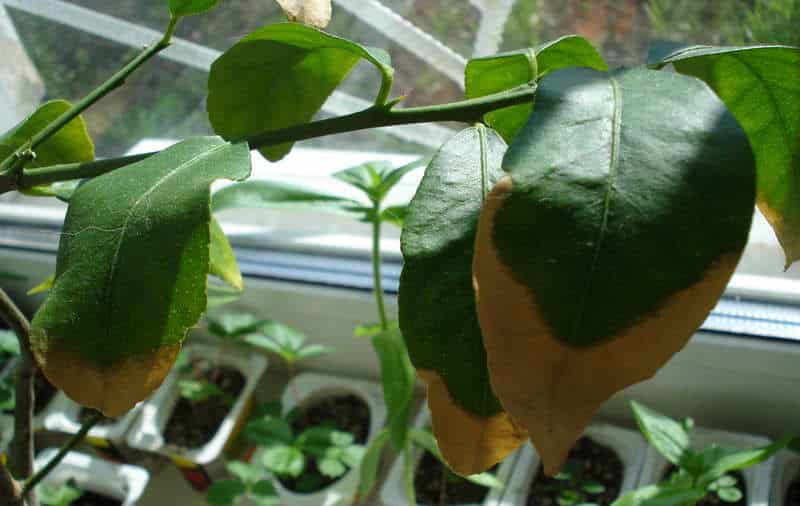
Gommoz
Another name for the disease is gum flow. In the initial stage, spots of a red-brown color appear on the surface of the trunk, branches. The bark under them dies off, gum is released from the wounds. There are many possible causes of the disease:
- deepened when landing;
- poor drainage;
- unbalanced feeding, nitrogen predominance;
- mechanical trauma to the cortex.
The damaged areas are cleaned, treated with copper sulfate (3% solution), and covered with garden varnish.
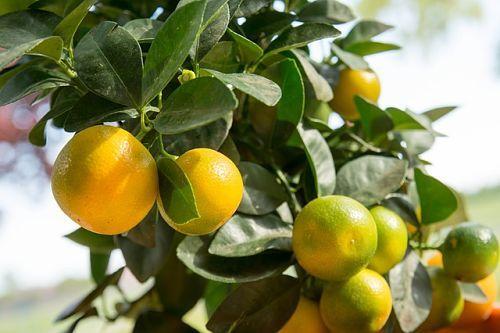
Psorosis A or xylopsorosis
This is a viral disease. The bark suffers. A diseased tree cannot be treated. The plant is destroyed. Symptoms are similar to gommosis. At home, an accurate analysis is difficult to establish.
Tristeza
In this viral disease, the bark of the tangerine tree dies off. At first, the disease is manifested by a change in the color of the leaves. They turn bronze. Over time, the crown becomes bare. The virus infects branches and fruits. They crumble before ripening. The root system also suffers. It is impossible to cure a tangerine.
Sheet mosaic
Pattern in the form of strokes and stripes on mandarin leaves. With the progression of the disease, their deformation and shedding occurs. The disease cannot be cured.

Citrus Cancer
The disease is bacterial in nature and cannot be treated. Signs of cancer are dark, bright brown spots on the peel of the fruit, on the leaves.
Mandarin tree pests
Any harmful insect that has settled on an indoor plant is harmful. The tangerine tree has many enemies. An infected plant can be easily recognized by its depressed appearance, yellowed, deformed leaves.
Shield
From the scabbard, the tangerine is sprayed with soapy water. Prepare it from water (3 l) and "Fairy" (2 tbsp. L). In case of severe infection, the tree is treated with Actellic three times. The houseplant is attacked by an insect of 3 types:
- yellow orange;
- orange with a flap;
- rod-shaped.
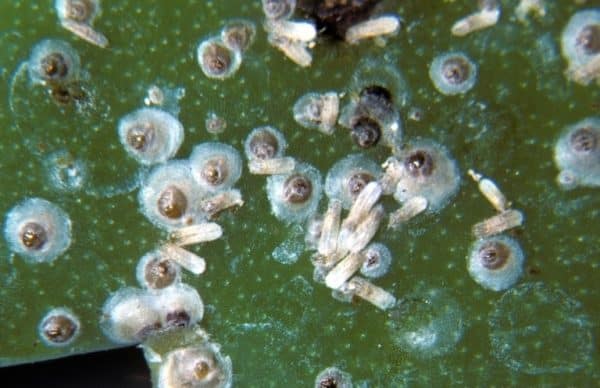
Scale larvae suck out the juice, their secretions create a film on the surface of the leaves, disrupt respiration.
Spider mite
This insect attacks the tangerine, if it is not watered in time, the soil is dry. Pests are collected by hand, the leaves are wiped with a napkin dipped in cold water. The crown is treated with garlic infusion. Acaricide preparations ("Vertimek", "Fitoverm") are effective.
Greenhouse thrips
This flying pest feeds on pollen, nectar, leaf juice. The length of an adult is 1.5-2 mm. The color of females is gray, males are black. High humidity and air temperature create favorable conditions for thrips reproduction. Insect tangerines are sprayed with insecticide 3 times with an interval of 2 weeks.
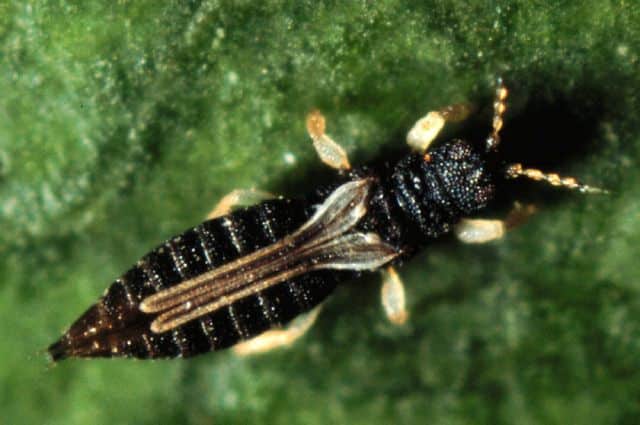
Whitefly
Mandarin leaves damage the larvae. They are green and settle on the back of the leaves. The butterfly itself is small, covered with a light bloom. Coloring of body and wings is white-pink. The insect crown is treated with bioinsecticides:
- Aktofit;
- "Bicol".
Mealybug
An adult has a body 3-6 mm long. The larvae pose a threat to the mandarin. They are mobile, suck the juice of young shoots, leaves, buds. You can find out about the pest by the sticky white discharge. The insect carries an infection - sooty fungus. They fight the pest with a solution of "Karbofos" (5 g of the drug per 1 liter of water). With an interval of 7 days, 4 treatments are carried out.

Aphid
Adults 1-3 mm long settle on the back of the leaf plates. The affected leaves curl and dry. They fight aphids using folk methods:
- an oil-soap emulsion is prepared from machine oil and soap (1 l of water, 1 tbsp. l. oil, 1 tbsp. l. liquid soap);
- the tree is sprayed with tobacco infusion;
- the leaves are treated with ash infusion.
Garden slug
The leaves suffer from the gluttonous insect. Fight it with traps and drugs:
- "Meta";
- "Bros Snakol";
- Ferramol.
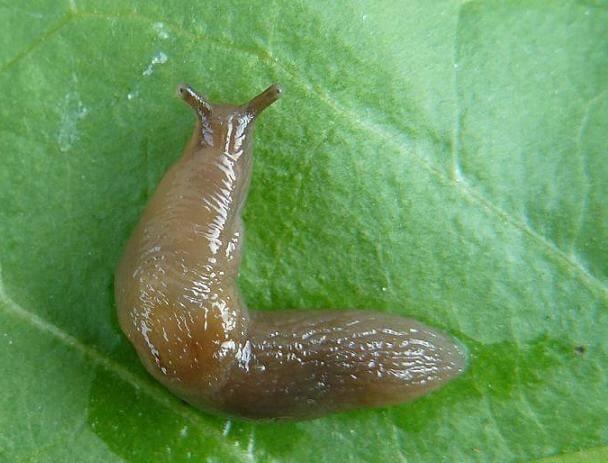
Earthworms
The worms are expelled from the pot with mustard. Its solution (1 liter of water, 1 tsp. Powder) is poured over the soil. Single specimens do not harm the plant. A large number of earthworms inhibits the plant, inhibits growth.
Citrus nematode
The tangerine root system suffers from small milky worms. Lesions appear as small bumps. The nutrition of the plant deteriorates, this affects its immunity and appearance. Growth slows down, the number of ovaries decreases, and the risk of fungal diseases increases.
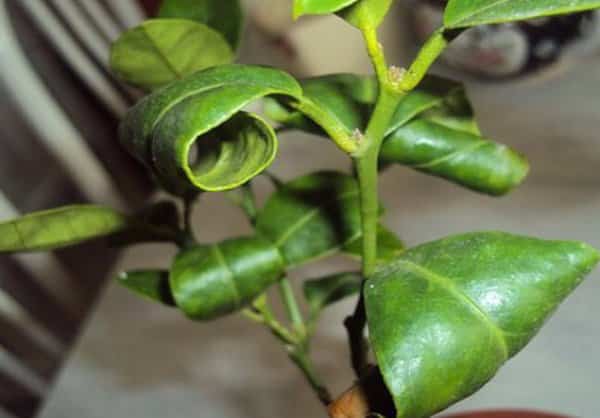
Prevention of diseases and pests
A tangerine tree infected with a virus cannot be cured. The only way to fight is prevention. The following measures prevent diseases:
- creating an optimal microclimate;
- top dressing;
- regular watering;
- systemic examination of the tree, removal of damaged branches, leaves.
In order to prevent viral, fungal and bacterial infections, modern biofungicides are used. The soil is watered with a solution, the crown is periodically sprayed.
